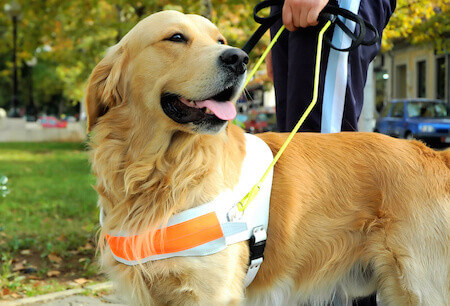The use of animals for therapeutic purposes has gained significant attention in recent years, with two primary categories emerging: emotional support animals (ESAs) and service animals. While both provide valuable assistance to individuals, they serve distinct roles and are subject to different regulations. In this article, we will explore the differences between emotional support animals and service animals, shedding light on their respective roles, legal protections, and qualifications. Additionally, we will provide some government and not-for-profit resources for those seeking more information or assistance.

Emotional Support Animals (ESAs)
Emotional Support Animals (ESAs) play a crucial role in providing emotional comfort and support to individuals dealing with various mental health conditions. ESAs are typically cats or dogs, but other species can also qualify. The primary function of an ESA is to alleviate the symptoms of their owner’s emotional or psychological disability.
- Qualifications:
- To qualify for an ESA, an individual must have a verifiable mental health condition, such as anxiety, depression, or post-traumatic stress disorder (PTSD).
- A licensed mental health professional, such as a therapist or psychiatrist, must provide a formal ESA letter, stating that the animal is a necessary part of the individual’s treatment plan.
- Legal Protections:
- Under the Fair Housing Act (FHA), individuals with ESAs are permitted to live in housing that has a “no pets” policy. Landlords are required to make reasonable accommodations for ESA owners.
- ESAs are not granted public access rights. They are not allowed in restaurants, stores, or other public places where pets are typically restricted.
Service Animals
Service animals are highly trained to perform specific tasks or functions that assist individuals with disabilities. These animals are not limited to assisting individuals with mental health conditions; they can be trained to help those with physical disabilities, sensory impairments, or medical conditions. Common types of service animals include guide dogs for the visually impaired, mobility assistance dogs, and seizure alert dogs.
- Qualifications:
- Service animals are specifically trained to perform tasks that mitigate the effects of a person’s disability. These tasks can include guiding a person with impaired vision, alerting someone to an oncoming seizure, or retrieving objects for individuals with mobility issues.
- Service animals can be of any breed, and they must be well-behaved and under control in public places.
- Legal Protections:
- The Americans with Disabilities Act (ADA) grants service animals public access rights. They are allowed to accompany their owners in businesses, restaurants, and other public areas, even in places where pets are typically not allowed.
- Service animals are not subject to breed or size restrictions, and their presence cannot be denied based on allergies or fear of animals.

Additional Resources
If you or someone you know is considering getting an emotional support animal or service animal, or if you want to learn more about the regulations surrounding these animals, the following government and not-for-profit resources can provide valuable information and guidance:
- U.S. Department of Housing and Urban Development (HUD): HUD provides information about housing rights for individuals with emotional support animals under the Fair Housing Act.
- Americans with Disabilities Act (ADA): The ADA website offers comprehensive information on the rights and responsibilities of individuals with disabilities and their service animals.
- National Service Animal Registry (NSAR): NSAR is a not-for-profit organization that provides registration and certification for service animals and emotional support animals.
- Assistance Dogs International (ADI): ADI is an international organization that accredits organizations that train and place assistance dogs.
Review
Understanding the differences between emotional support animals and service animals is crucial for individuals seeking appropriate support and accommodations. ESAs offer emotional comfort to those with mental health conditions, while service animals provide specific assistance to individuals with disabilities. Knowing the qualifications and legal protections for each category can help individuals make informed decisions about obtaining and utilizing these valuable companions. For further guidance and resources, government agencies and not-for-profit organizations are readily available to assist those in need.
